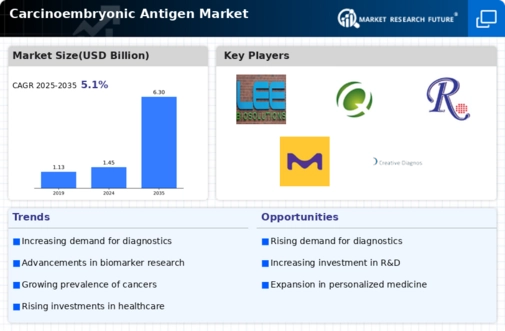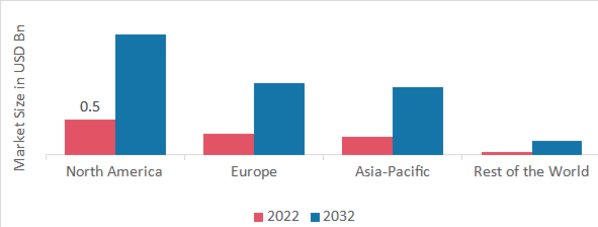-
REPORT PROLOGUE
-
2.
-
MARKET INTRODUCTION
-
Definition
- Research Objective
- Limitations
-
2.2.
-
Scope of the Study
-
2.2.2.
-
Assumptions
-
RESEARCH METHODOLOGY
-
Overview
-
Primary Research
-
Secondary
-
Research
-
Market Size Estimation
-
4.
-
MARKET DYNAMICS
-
Overview
-
4.2.
-
Drivers
-
Restraints
-
Opportunities
-
MARKET FACTOR ANALYSIS
-
Porter’s
- Bargaining Power of Suppliers
- Bargaining Power of Buyers
- Threat
- Threat of Substitutes
-
Five Forces Analysis
-
of New Entrants
-
5.1.5.
-
Intensity of Rivalry
-
Value Chain Analysis
- Manufacturing
- Post Sales Services
-
5.2.1.
-
R&D and Designing
-
5.2.3.
-
Distribution & Sales
-
GLOBAL CARCINOEMBRYONIC ANTIGEN MARKET, BY APPLICATION
-
Overview
-
Colorectal Cancer
-
Market Estimates & Forecast, by Region, 2020-2027
-
Market Estimates &
-
Forecast, by Country, 2020-2027
-
Pancreatic Cancer
-
Market Estimates & Forecast, by Region, 2020-2027
-
Market Estimates &
-
Forecast, by Country, 2020-2027
-
Breast Cancer
-
Market
-
Estimates & Forecast, by Region, 2020-2027
-
Market Estimates & Forecast,
-
by Country, 2020-2027
-
Lung Cancer
-
Market Estimates
-
& Forecast, by Region, 2020-2027
-
Market Estimates & Forecast, by Country,
-
Others
-
Market Estimates & Forecast,
-
by Region, 2020-2027
-
Market Estimates & Forecast, by Country, 2020-2027
-
GLOBAL CARCINOEMBRYONIC ANTIGEN MARKET, BY END USER
-
7.1.
-
Overview
-
Hospitals and Clinics
-
Market Estimates
-
& Forecast, by Region, 2020-2027
-
Market Estimates & Forecast, by Country,
-
Diagnostic Centers
-
Market Estimates
-
& Forecast, by Region, 2020-2027
-
Market Estimates & Forecast, by Country,
-
Others
-
Market Estimates & Forecast,
-
by Region, 2020-2027
-
Market Estimates & Forecast, by Country, 2020-2027
-
GLOBAL CARCINOEMBRYONIC ANTIGEN MARKET, BY REGION
-
8.1.
-
Overview
-
Americas
- North
- Latin America
-
America
-
Europe
-
8.3.1.
-
Western Europe
-
8.3.1.2.
-
France
-
Europe
-
8.4.3.
-
India
-
Korea
-
East & Africa
-
8.5.2.
-
Africa
-
Germany
-
Italy
-
Spain
-
UK
-
Rest of Western
-
Eastern Europe
-
Asia-Pacific
- Japan
- China
- Australia
- South
- Rest of Asia-Pacific
-
Middle
- Middle East
-
COMPANY LANDSCAPE
-
Overview
-
Competitive Analysis
-
Market
-
Share Analysis
-
Major Growth Strategy in the Global Carcinoembryonic
-
Antigen Market
-
Competitive Benchmarking
-
9.6.
-
Leading Players in Terms of Number of Developments in the Global Carcinoembryonic
-
Antigen Market
-
Key Developments and Growth Strategies
- New Product Launches
- Mergers
- Joint Ventures
- Major Players
-
and Acquisitions
-
9.8.
-
Major Players Financial Matrix & Market Ratio
-
9.8.1.
-
Sales & Operating Income 2020
-
R&D Expenditure 2020
-
Major Players Capital Market
-
Ratio
-
COMPANY PROFILES
-
Abcam
- Company Overview
- Financial
- Key Developments
- Key Strategies
-
plc
-
10.1.2.
-
Product Overview
-
Overview
-
10.1.5.
-
SWOT Analysis
-
10.2.
-
Boster Biological Technology
-
Creative Diagnostics
-
F. Hoffmann-La Roche Ltd
-
10.5.
-
Genway Biotech, Inc.
-
Laboratory Corporation of
-
America Holdings
-
Lee BioSolutions
-
10.8.
-
Merck KGaA
-
Quest Diagnostics Incorporated
-
RayBiotech, Inc.
-
Others
-
APPENDIX
-
References
-
11.2.
-
Related Reports
-
-
LIST OF TABLES
-
GLOBAL
-
CARCINOEMBRYONIC ANTIGEN MARKET SYNOPSIS, 2020-2027
-
GLOBAL
-
CARCINOEMBRYONIC ANTIGEN MARKET ESTIMATES & FORECAST, 2020-2027 (USD MILLION)
-
GLOBAL CARCINOEMBRYONIC
-
ANTIGEN MARKET, BY APPLICATION, 2020-2027 (USD MILLION)
-
TABLE 4
-
GLOBAL CARCINOEMBRYONIC ANTIGEN MARKET, BY END USER, 2020-2027 (USD MILLION)
-
GLOBAL CARCINOEMBRYONIC ANTIGEN MARKET, BY REGION, 2020-2027
-
(USD MILLION)
-
NORTH AMERICA: CARCINOEMBRYONIC ANTIGEN
-
MARKET, BY APPLICATION, 2020-2027 (USD MILLION)
-
NORTH AMERICA: CARCINOEMBRYONIC ANTIGEN MARKET,
-
BY END USER, 2020-2027 (USD MILLION)
-
US: CARCINOEMBRYONIC ANTIGEN MARKET, BY APPLICATION,
-
US:
-
CARCINOEMBRYONIC ANTIGEN MARKET, BY END USER, 2020-2027 (USD MILLION)
-
CANADA: CARCINOEMBRYONIC
-
ANTIGEN MARKET, BY APPLICATION, 2020-2027 (USD MILLION)
-
CANADA: CARCINOEMBRYONIC ANTIGEN MARKET, BY END USER,
-
TABLE 12
-
LATIN AMERICA: CARCINOEMBRYONIC ANTIGEN MARKET, BY APPLICATION, 2020-2027
-
(USD MILLION)
-
TABLE 13
-
LATIN AMERICA: CARCINOEMBRYONIC ANTIGEN MARKET, BY END USER, 2020-2027 (USD
-
MILLION)
-
EUROPE: CARCINOEMBRYONIC ANTIGEN MARKET,
-
BY APPLICATION, 2020-2027 (USD MILLION)
-
EUROPE: CARCINOEMBRYONIC ANTIGEN MARKET, BY END USER,
-
TABLE 16
-
WESTERN EUROPE: CARCINOEMBRYONIC ANTIGEN MARKET, BY APPLICATION, 2020-2027
-
(USD MILLION)
-
TABLE
-
WESTERN EUROPE: CARCINOEMBRYONIC ANTIGEN MARKET, BY END USER,
-
EASTERN EUROPE: CARCINOEMBRYONIC ANTIGEN
-
MARKET, BY APPLICATION, 2020-2027 (USD MILLION)
-
EASTERN EUROPE: CARCINOEMBRYONIC
-
ANTIGEN MARKET, BY END USER, 2020-2027 (USD MILLION)
-
ASIA-PACIFIC: CARCINOEMBRYONIC
-
ANTIGEN MARKET, BY APPLICATION, 2020-2027 (USD MILLION)
-
ASIA-PACIFIC: CARCINOEMBRYONIC
-
ANTIGEN MARKET, BY END USER, 2020-2027 (USD MILLION)
-
MIDDLE EAST &
-
AFRICA: CARCINOEMBRYONIC ANTIGEN MARKET, BY APPLICATION, 2020-2027 (USD MILLION)
-
TABLE 23
-
MIDDLE EAST & AFRICA: CARCINOEMBRYONIC ANTIGEN MARKET, BY END USER, 2020-2027
-
(USD MILLION)
-
-
LIST OF FIGURES
-
RESEARCH
-
PROCESS
-
MARKET STRUCTURE OF THE GLOBAL CARCINOEMBRYONIC
-
ANTIGEN MARKET
-
MARKET DYNAMICS OF THE GLOBAL CARCINOEMBRYONIC
-
ANTIGEN MARKET
-
GLOBAL CARCINOEMBRYONIC ANTIGEN MARKET
-
SHARE, BY APPLICATION, 2020 (%)
-
GLOBAL CARCINOEMBRYONIC
-
ANTIGEN MARKET SHARE, BY END USER, 2020 (%)
-
GLOBAL
-
CARCINOEMBRYONIC ANTIGEN MARKET SHARE, BY REGION, 2020 (%)
-
FIGURE 7
-
AMERICAS: CARCINOEMBRYONIC ANTIGEN MARKET SHARE BY REGION, 2020 (%)
-
FIGURE
-
NORTH AMERICA: CARCINOEMBRYONIC ANTIGEN MARKET SHARE, BY COUNTRY,
-
EUROPE: CARCINOEMBRYONIC ANTIGEN MARKET
-
SHARE, BY REGION, 2020 (%)
-
WESTERN EUROPE: CARCINOEMBRYONIC
-
ANTIGEN MARKET SHARE, BY COUNTRY, 2020 (%)
-
ASIA-PACIFIC:
-
CARCINOEMBRYONIC ANTIGEN MARKET SHARE, BY COUNTRY, 2020 (%)
-
FIGURE 12
-
MIDDLE EAST & AFRICA: CARCINOEMBRYONIC ANTIGEN MARKET SHARE, BY REGION,
-
GLOBAL CARCINOEMBRYONIC ANTIGEN MARKET:
-
COMPANY SHARE ANALYSIS, 2020 (%)
-
ABCAM PLC.: KEY
-
FINANCIALS
-
ABCAM PLC: SEGMENTAL REVENUE
-
FIGURE
-
ABCAM PLC: REGIONAL REVENUE
-
BOSTER
-
BIOLOGICAL TECHNOLOGY: KEY FINANCIALS
-
BOSTER BIOLOGICAL
-
TECHNOLOGY: SEGMENTAL REVENUE
-
BOSTER BIOLOGICAL
-
TECHNOLOGY: REGIONAL REVENUE
-
CREATIVE DIAGNOSTICS:
-
KEY FINANCIALS
-
CREATIVE DIAGNOSTICS: SEGMENTAL
-
REVENUE
-
CREATIVE DIAGNOSTICS: REGIONAL REVENUE
-
F. HOFFMANN-LA ROCHE LTD: KEY FINANCIALS
-
FIGURE
-
F. HOFFMANN-LA ROCHE LTD: SEGMENTAL REVENUE
-
FIGURE 25
-
F. HOFFMANN-LA ROCHE LTD: REGIONAL REVENUE
-
GENWAY
-
BIOTECH, INC.: KEY FINANCIALS
-
GENWAY BIOTECH, INC.:
-
SEGMENTAL REVENUE
-
GENWAY BIOTECH, INC.: REGIONAL
-
REVENUE
-
LABORATORY CORPORATION OF AMERICA HOLDINGS:
-
KEY FINANCIALS
-
LABORATORY CORPORATION OF AMERICA
-
HOLDINGS: SEGMENTAL REVENUE
-
LABORATORY CORPORATION
-
OF AMERICA HOLDINGS: REGIONAL REVENUE
-
LEE BIOSOLUTIONS:
-
KEY FINANCIALS
-
LEE BIOSOLUTIONS: SEGMENTAL REVENUE
-
LEE BIOSOLUTIONS: REGIONAL REVENUE
-
FIGURE 35
-
MERCK KGAA: KEY FINANCIALS
-
MERCK KGAA: SEGMENTAL
-
REVENUE
-
MERCK KGAA: REGIONAL REVENUE
-
FIGURE
-
QUEST DIAGNOSTICS INCORPORATED: KEY FINANCIALS
-
FIGURE
-
QUEST DIAGNOSTICS INCORPORATED: SEGMENTAL REVENUE
-
FIGURE
-
QUEST DIAGNOSTICS INCORPORATED: REGIONAL REVENUE
-
FIGURE
-
RAYBIOTECH, INC.: KEY FINANCIALS
-
FIGURE 42
-
RAYBIOTECH, INC.: SEGMENTAL REVENUE
-
RAYBIOTECH,
-
INC.: REGIONAL REVENUE









Leave a Comment